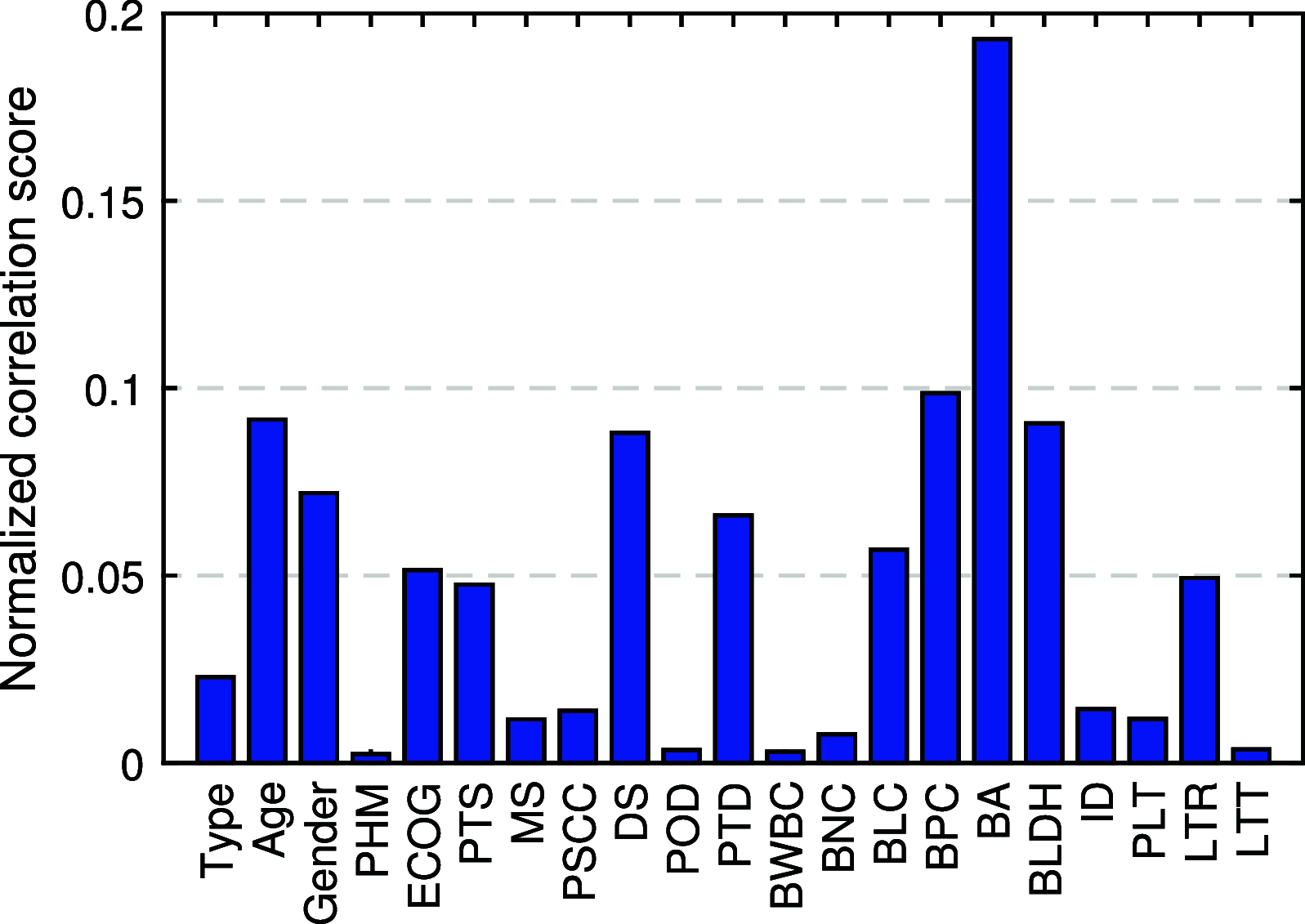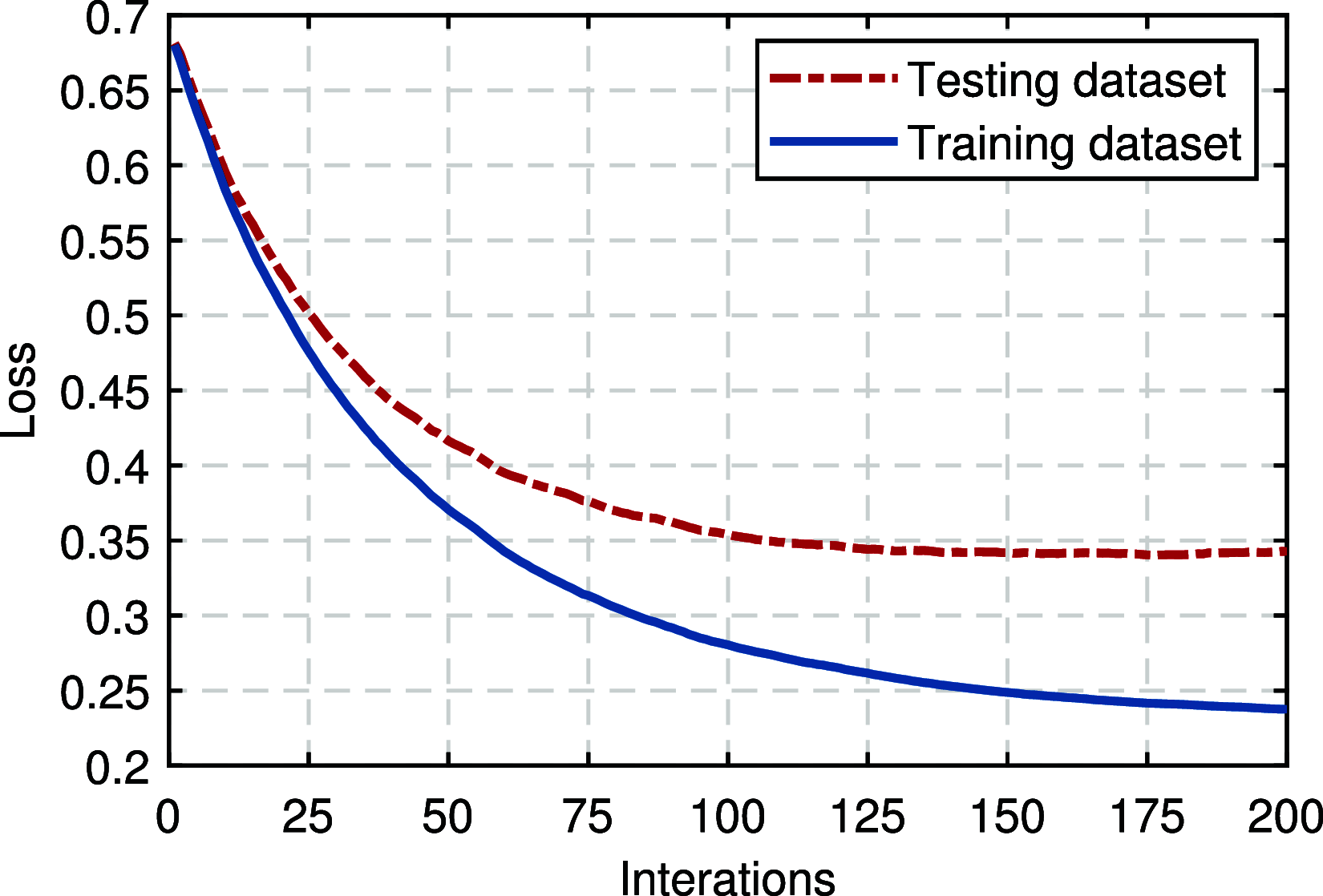Prediction of Survival in Patients With Esophageal Cancer After Immunotherapy Based on Small-Size Follow-Up Data
- PMID: 39464488
- PMCID: PMC11505867
- DOI: 10.1109/OJEMB.2024.3452983
Prediction of Survival in Patients With Esophageal Cancer After Immunotherapy Based on Small-Size Follow-Up Data
Abstract
Esophageal cancer (EC) poses a significant health concern, particularly among the elderly, warranting effective treatment strategies. While immunotherapy holds promise in activating the immune response against tumors, its specific impact and associated reactions in EC patients remain uncertain. Precise prognosis prediction becomes crucial for guiding appropriate interventions. This study, based on data from the First Affiliated Hospital of Xiamen University (January 2017 to May 2021), focuses on 113 EC patients undergoing immunotherapy. The primary objectives are to elucidate the effectiveness of immunotherapy in EC treatment and to introduce a stacking ensemble learning method for predicting the survival of EC patients who have undergone immunotherapy, in the context of small sample sizes, addressing the imperative of supporting clinical decision-making for healthcare professionals. Our method incorporates five sub-learners and one meta-learner. Leveraging optimal features from the training dataset, this approach achieved compelling accuracy (89.13%) and AUC (88.83%) in predicting three-year survival status, surpassing conventional techniques. The model proves efficient in guiding clinical decisions, especially in scenarios with small-size follow-up data.
Keywords: Esophageal carcinoma; immunotherapy; machine learning; stacking ensemble learning; survival prediction.
© 2024 The Authors.
Figures










Similar articles
-
Heterogeneous ensemble learning for enhanced crash forecasts - A frequentist and machine learning based stacking framework.J Safety Res. 2023 Feb;84:418-434. doi: 10.1016/j.jsr.2022.12.005. Epub 2022 Dec 14. J Safety Res. 2023. PMID: 36868672
-
LIME-based ensemble machine for predicting performance status of patients with liver cancer.Digit Health. 2023 Nov 7;9:20552076231211636. doi: 10.1177/20552076231211636. eCollection 2023 Jan-Dec. Digit Health. 2023. PMID: 38025102 Free PMC article.
-
Prediction of five-year survival among esophageal cancer patients using machine learning.Heliyon. 2023 Nov 29;9(12):e22654. doi: 10.1016/j.heliyon.2023.e22654. eCollection 2023 Dec. Heliyon. 2023. PMID: 38125437 Free PMC article.
-
The gap before real clinical application of imaging-based machine-learning and radiomic models for chemoradiation outcome prediction in esophageal cancer: a systematic review and meta-analysis.Int J Surg. 2023 Aug 1;109(8):2451-2466. doi: 10.1097/JS9.0000000000000441. Int J Surg. 2023. PMID: 37463039 Free PMC article.
-
The immune landscape of esophageal cancer.Cancer Commun (Lond). 2019 Nov 26;39(1):79. doi: 10.1186/s40880-019-0427-z. Cancer Commun (Lond). 2019. PMID: 31771653 Free PMC article. Review.
References
-
- Sung H. et al., “Global cancer statistics 2020: GLOBOCAN estimates of incidence and mortality worldwide for 36 cancers in 185 countries,” CA: Cancer J. Clinicians, vol. 71, no. 3, pp. 209–249, 2021. - PubMed
-
- Lin Z. et al., “CT-guided survival prediction of esophageal cancer,” IEEE J. Biomed. Health Inform., vol. 26, no. 6, pp. 2660–2669, Jun. 2021. - PubMed
-
- Merabishvili V. M., “State of the russian oncology service: Esophageal cancer. Population-based study at the federal district level. Part II. Median survival, observed and relative survival of patients considering disease stage and histological structure of tumors,” Pharm. Formulas, vol. 3, no. 3, pp. 40–47, 2021.
-
- Seibel E. J. et al., “Tethered capsule endoscopy, a low-cost and high-performance alternative technology for the screening of esophageal cancer and Barrett's esophagus,” IEEE Trans. Biomed. Eng., vol. 55, no. 3, pp. 1032–1042, Mar. 2008. - PubMed
LinkOut - more resources
Full Text Sources

